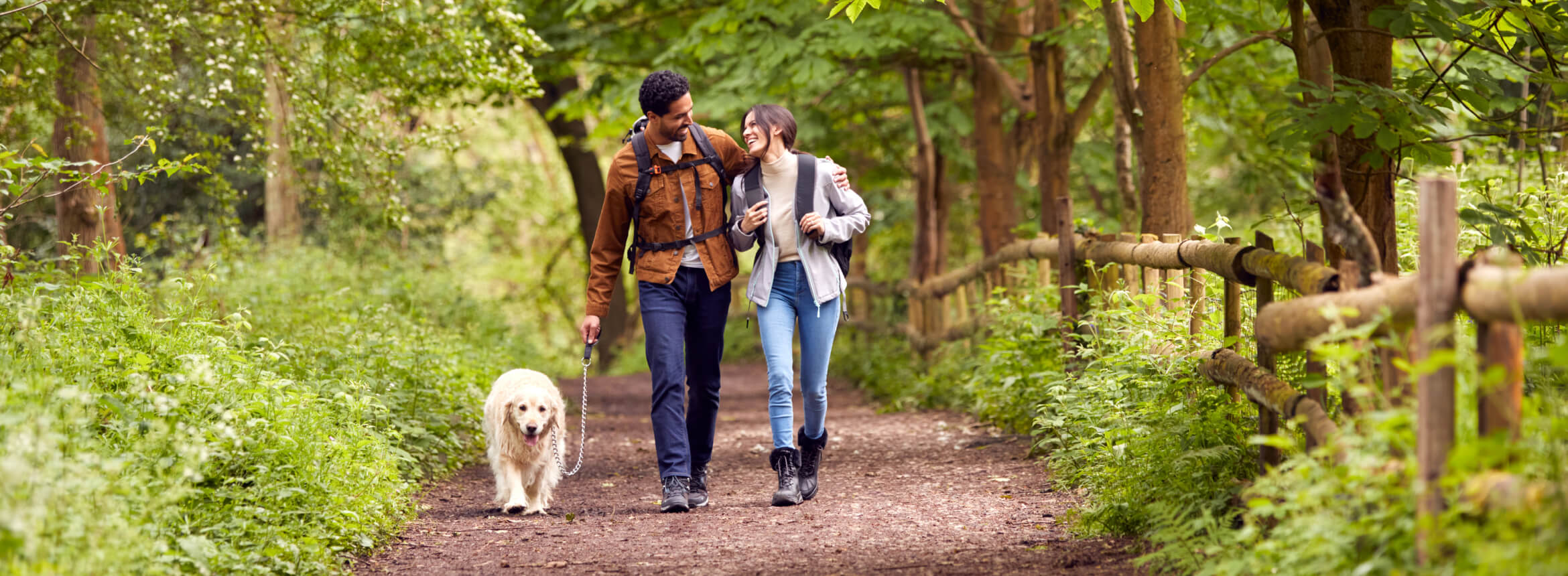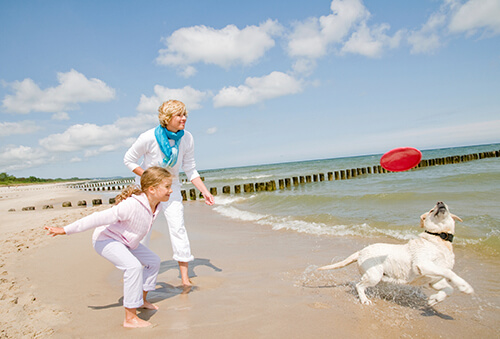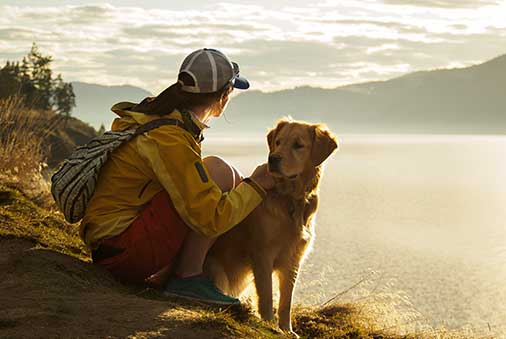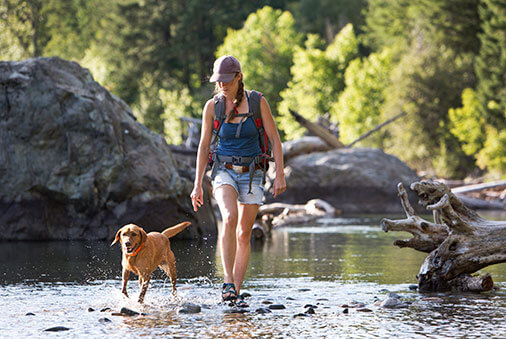America’s national parks are absolute treasures, true gems of astonishing beauty and breathtaking terrain. Across the nation, hundreds of millions of people have experienced their stunning landscapes, untouched wilderness, and rich biodiversity. Since Yellowstone was established as the first of its kind in 1872, a total of 63 national parks* have been designated by law across 30 states and two territories.
It might surprise you to know that most national parks do not allow dogs. There are a few reasons for this, but these policies are mainly in place to conserve the environment and avoid any interactions with the parks’ wildlife. Some parks, while allowing dogs, restrict their access to trails and other areas.
The good news is there are still some spectacular dog-friendly national parks to explore. Of course, you’ll need to follow some basic rules like keeping your dog on a leash that’s six feet or shorter, and making sure you clean up after them. We recommend checking each park’s website for any pet-specific rules they might enforce locally.
Alright, let’s dig in — here are the best dog-friendly national parks where you can make memories to last a lifetime.
*At the time this article was published.
1. Acadia National Park — Maine
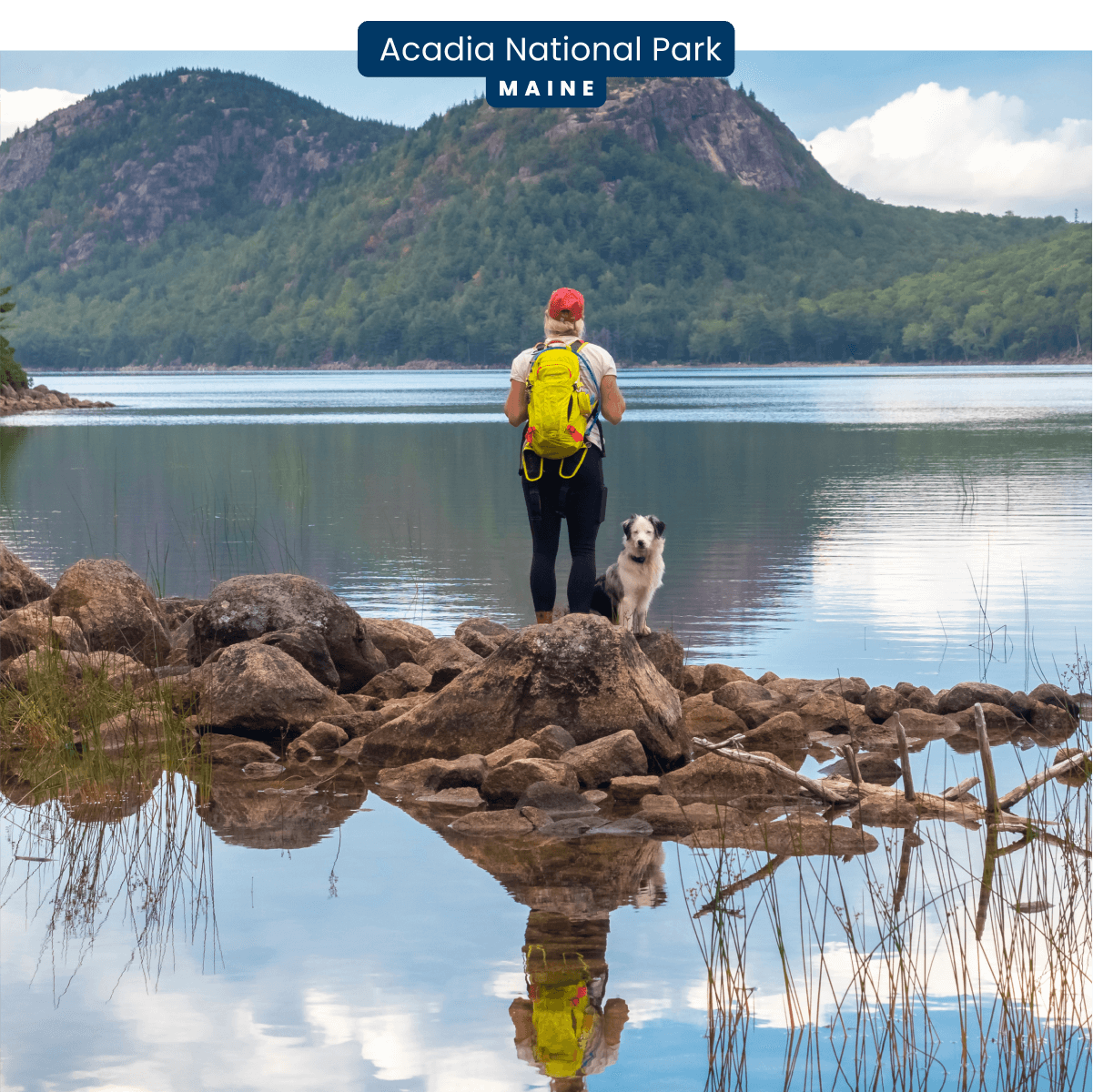
Located along the coast near Bar Harbor, Acadia National Park encompasses half of two islands and the tip of a stunning, lush peninsula. Boasting the famous Cadillac Mountain, the tallest mountain on America’s Atlantic coast, the park is filled with giant, glacially placed rocks, cobble beaches, granite domes, and stunning valleys. Dogs are welcome on over 100 miles of hiking paths and 45 miles of the historic crushed stone carriage road system established by John D. Rockefeller Jr. You won’t be able to bring your pup near lakes and natural water sources, but there’s still so much to explore in this incredible seaside jewel.
2. Shenandoah National Park — Virginia
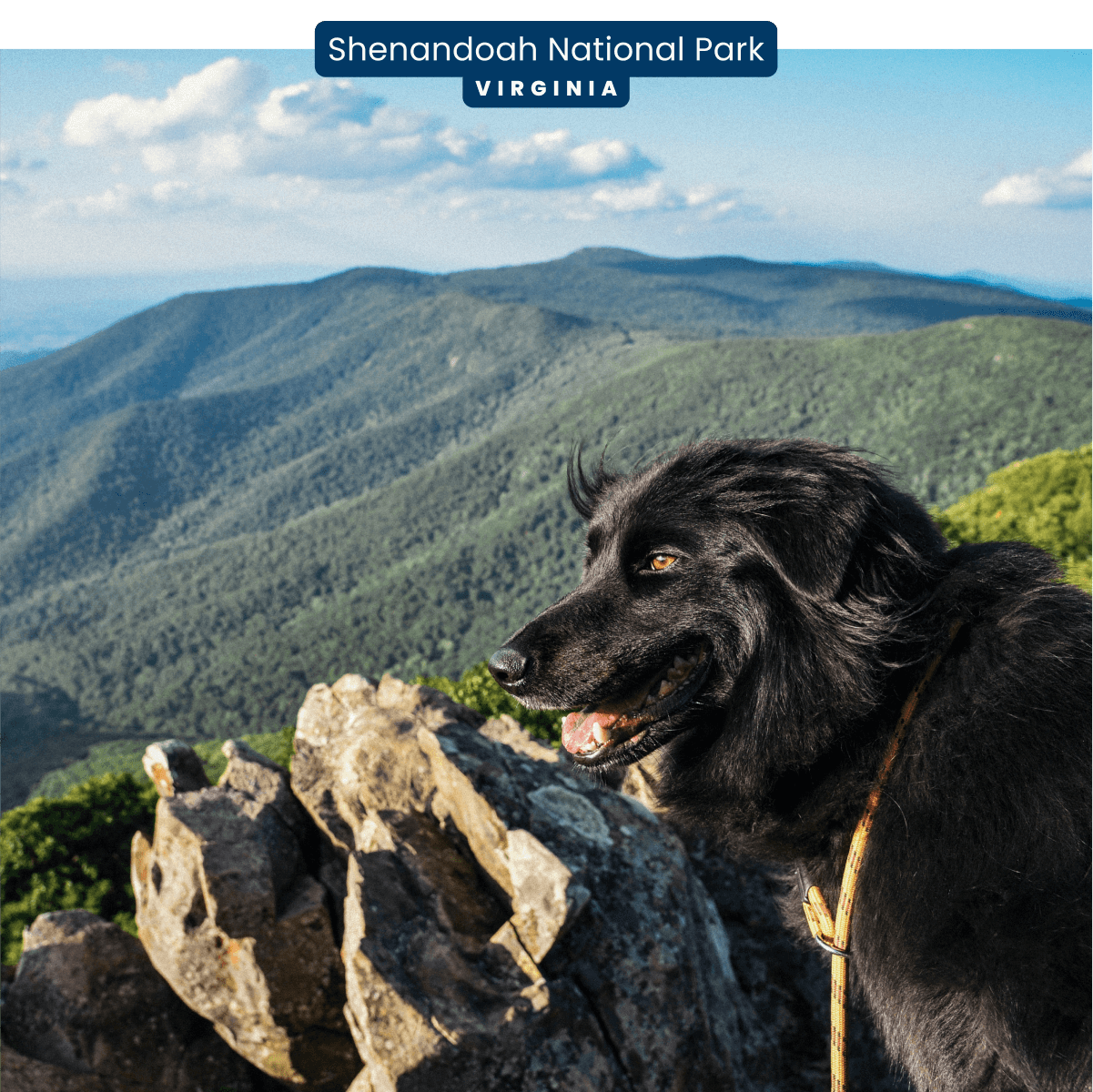
One of the most pet-friendly national parks of them all, Shenandoah National Park contains a gorgeous portion of the Blue Ridge Mountains and is famous for its Skyline Drive that cuts along the ridgeline of the mountains. Its namesake river carves a broad valley on the west side, while the hills of the Virginia Piedmont roll out beautifully to the east. Dogs are allowed on an incredible 500 miles of trails, including significant portions of the Appalachian Trail.
3. New River Gorge National Park and Reserve — West Virginia

America’s newest national park* is also one of the friendliest to dogs. Nestled in the southern West Virginia Appalachian Mountains, it was created to protect and maintain the New River Gorge and the surrounding areas. Rich in natural and cultural history, the park features incredible geological features carved out by flowing water.
Visitors can enjoy a multitude of recreational activities, including some of the best whitewater rafting in the country. The features of the Appalachian Plateau are especially unique, with an exposure of over 300 meters of sandstone and shale. Allowed on 100% of trails throughout this pet-friendly park, dogs can explore everything from giant boulders and channels to the ruins of an abandoned mining town.
*At the time this article was published.
4. Cuyahoga Valley National Park — Ohio
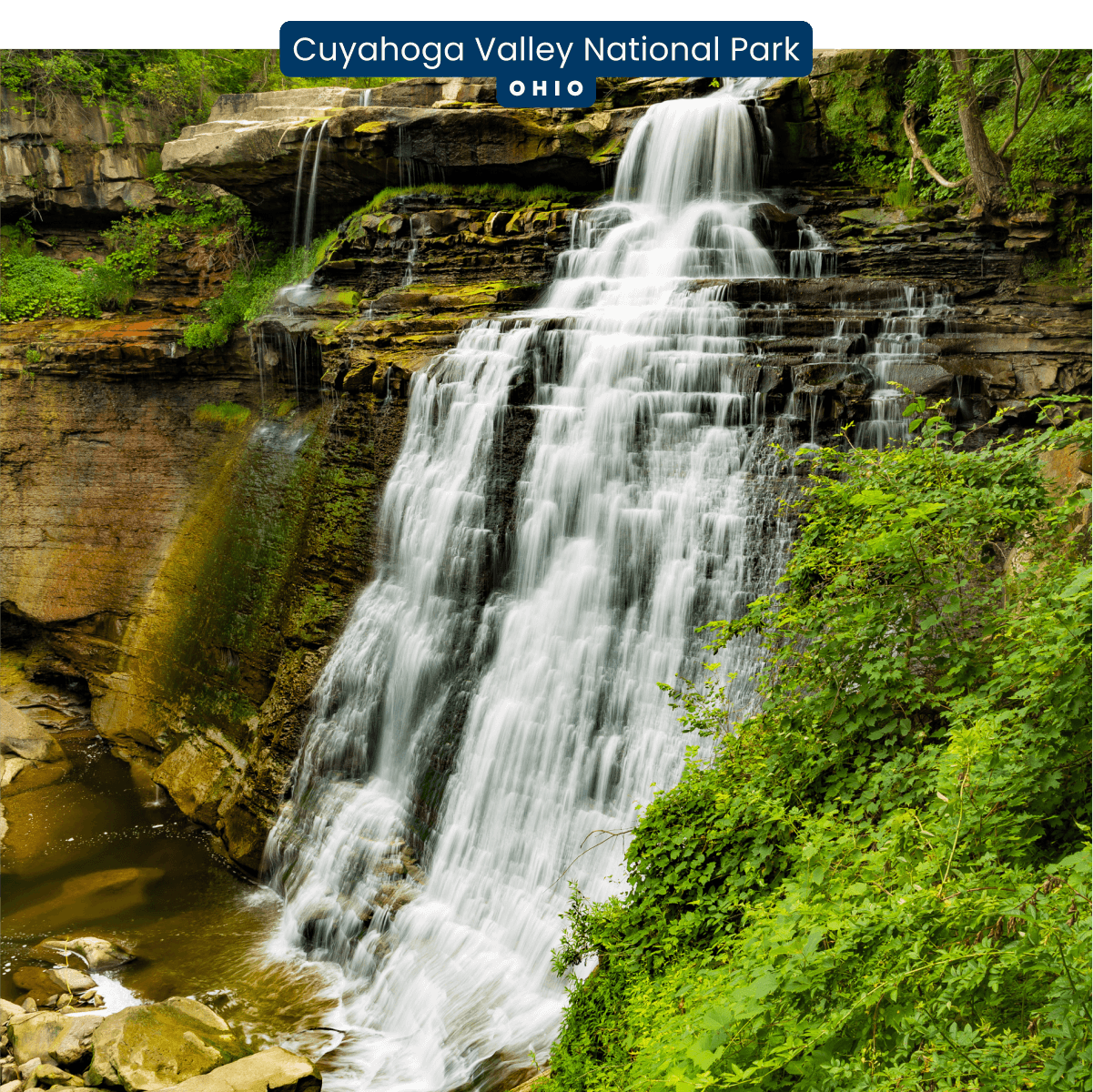
Nestled between Akron and Cleveland, Cuyahoga Valley is one of the most unique national parks in the country. The only one to border two major urban areas, it contains an extensive road network, several small towns, 15 public parks, a golf course, and many private attractions. You can even explore caves that were created by falling boulders. Dog parents can walk their pups on more than 100 miles of trails and see impressive rock outcroppings scattered along the way.
5. Indiana Dunes National Park — Indiana
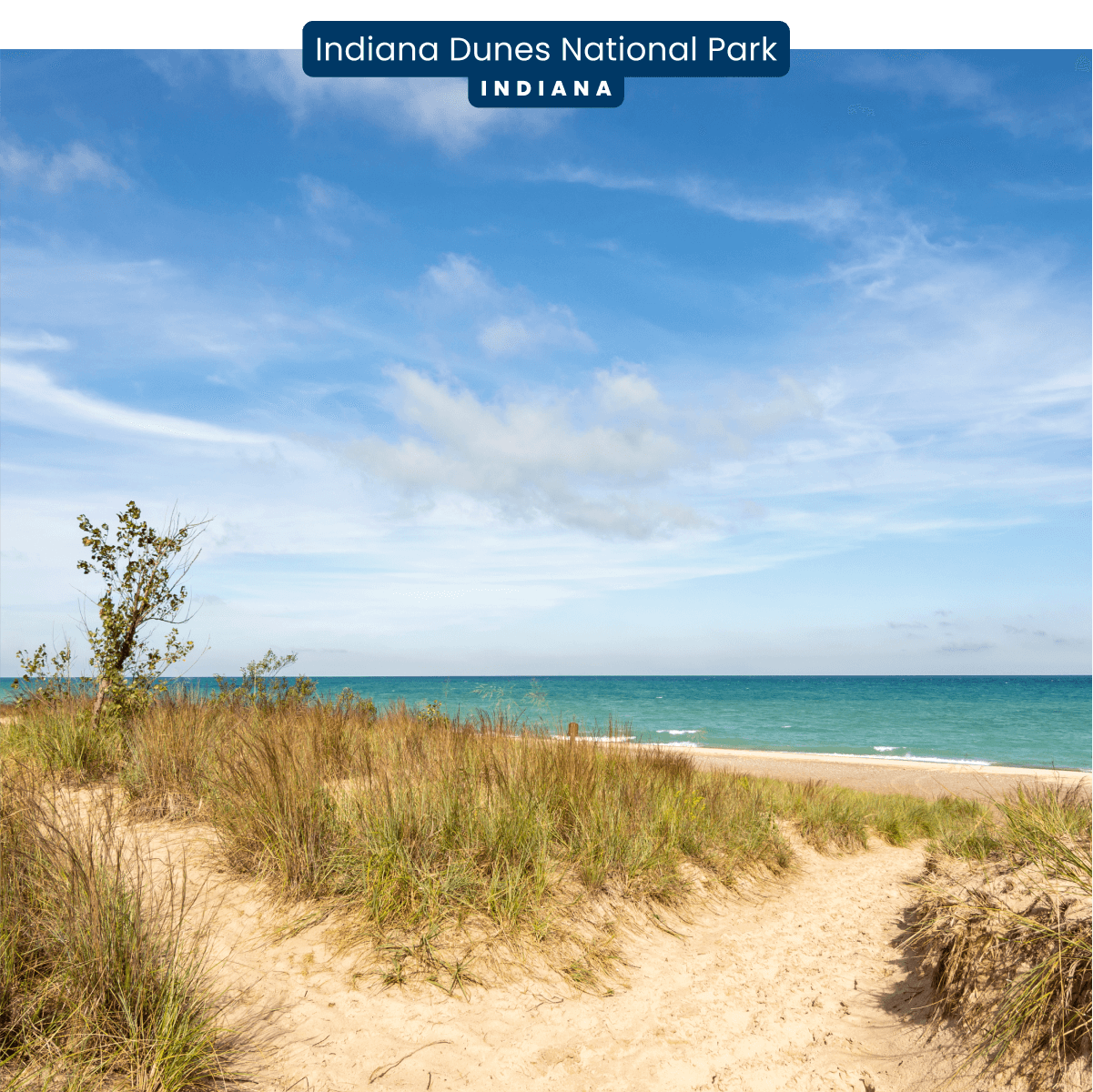
Just southeast of Chicago along Lake Michigan, there is a vast stretch of dunes formed by glacial movement, as well as woods, prairies, and marshes. This diverse landscape comprises the 15,000+ acres of Indiana Dunes National Park. Visitors can enjoy the West Beach along the lake (with a view of the Windy City across the water), fish, camp near the dunes, and more. Best of all, leashed dogs are free to roam the entire 15-mile shoreline of this dog-friendly park.
6. Hot Springs National Park — Arkansas
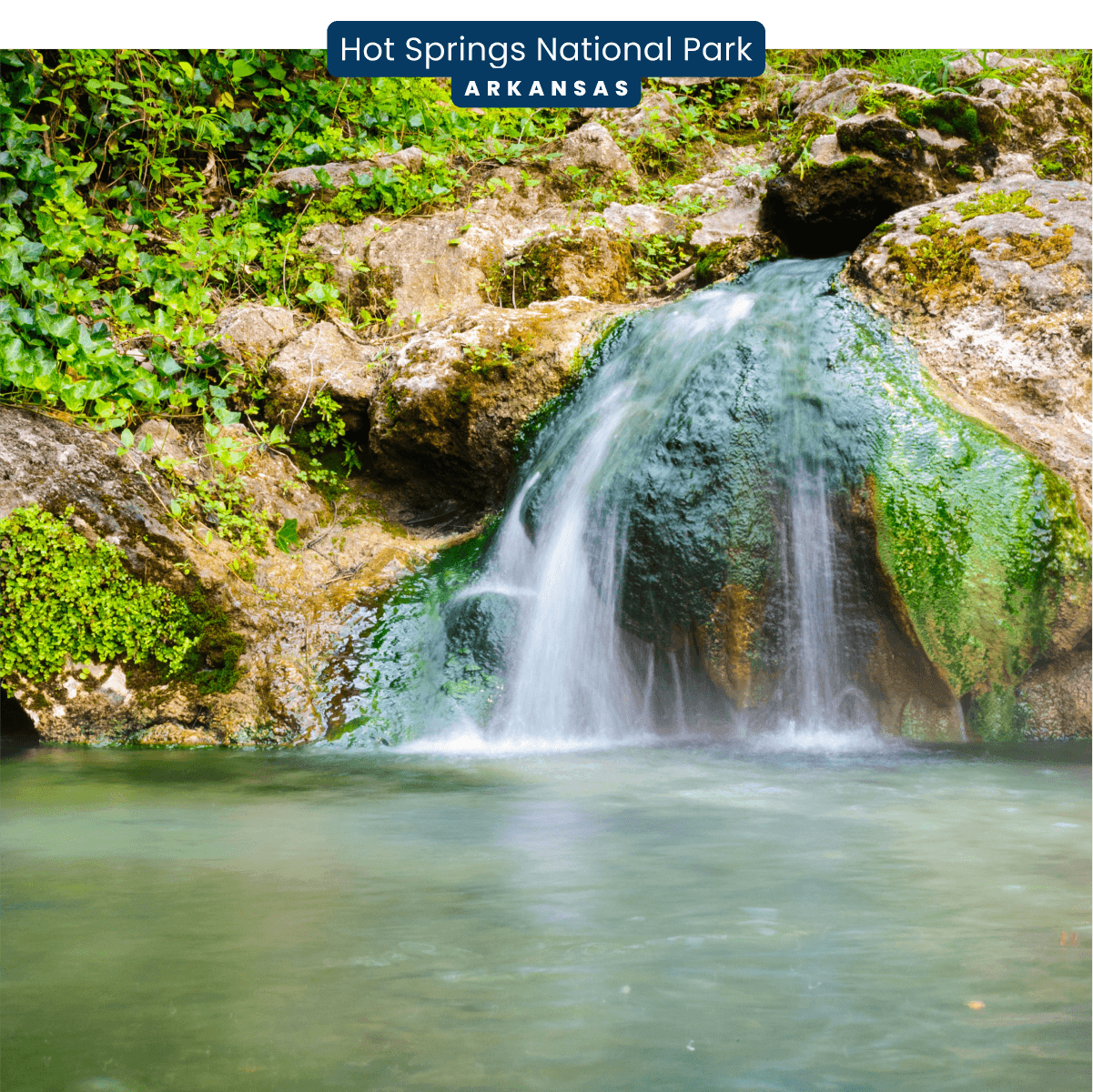
Adjacent to its namesake city, Hot Springs National Park is an accessible, smaller park with a very distinctive feature. You'll see natural springs at the base of Hot Springs Mountain that produce over half a million gallons of hot, steaming water every day. Along with the historic bathhouses in town, guests can enjoy the mountains, woodlands, campsites, and nearby town at their leisure. You and your pal can explore 26 miles of pet-friendly trails that flank the city.
7. White Sands National Park — New Mexico
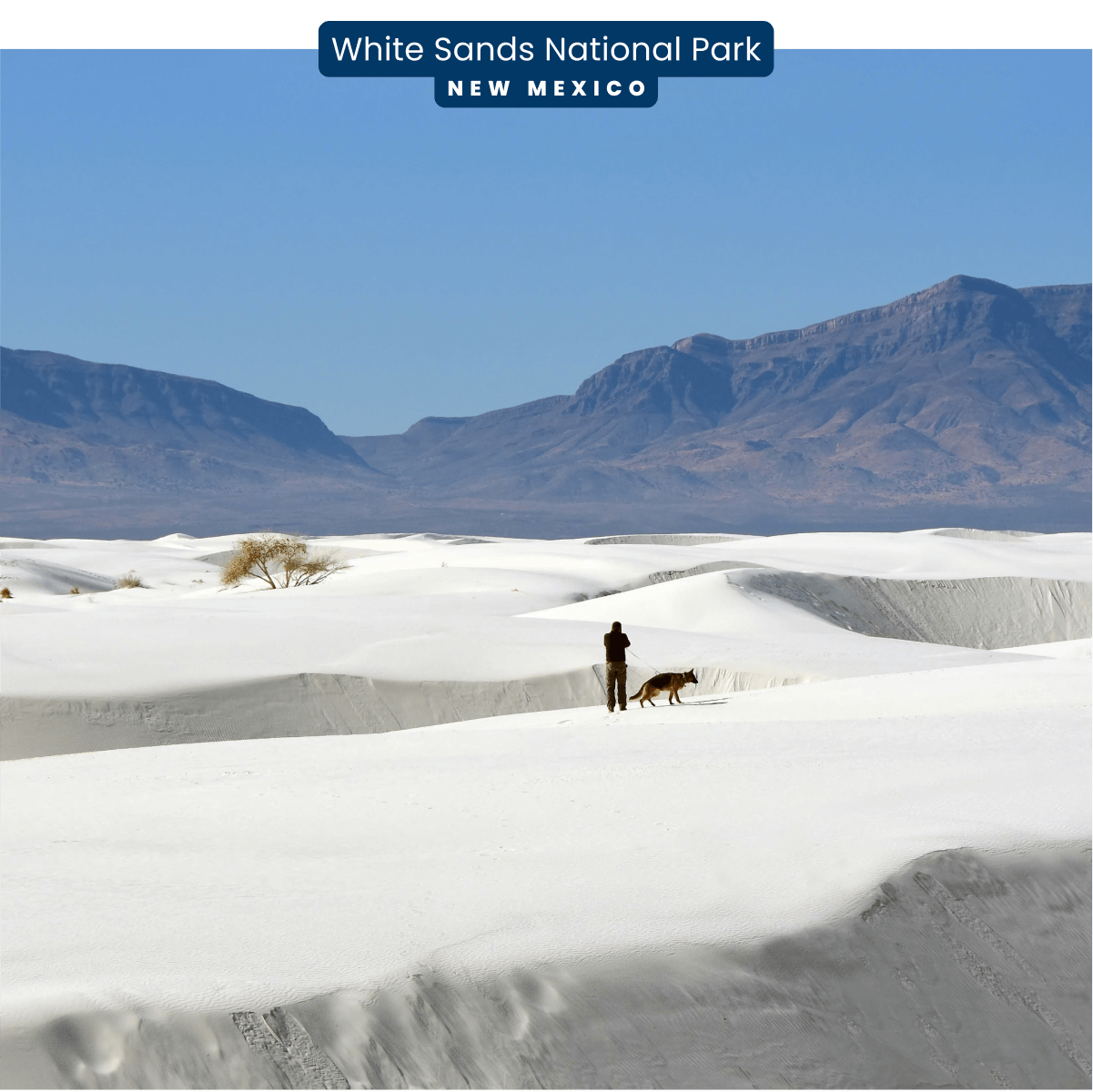
Covering a large portion of the Tularosa Basin, this unique national park contains a multitude of dunes composed of gypsum crystals. It’s one of the biggest national parks, spanning nearly 150,000 acres. A popular filming location of westerns during the golden age of Hollywood, it’s also surrounded by the White Sands Missile Range, a historic military testing area and firing range.
Like many other newly established national parks, White Sands is very dog-friendly. Your pup is allowed to walk on a leash across all its gorgeous sand dunes on and off trails.


